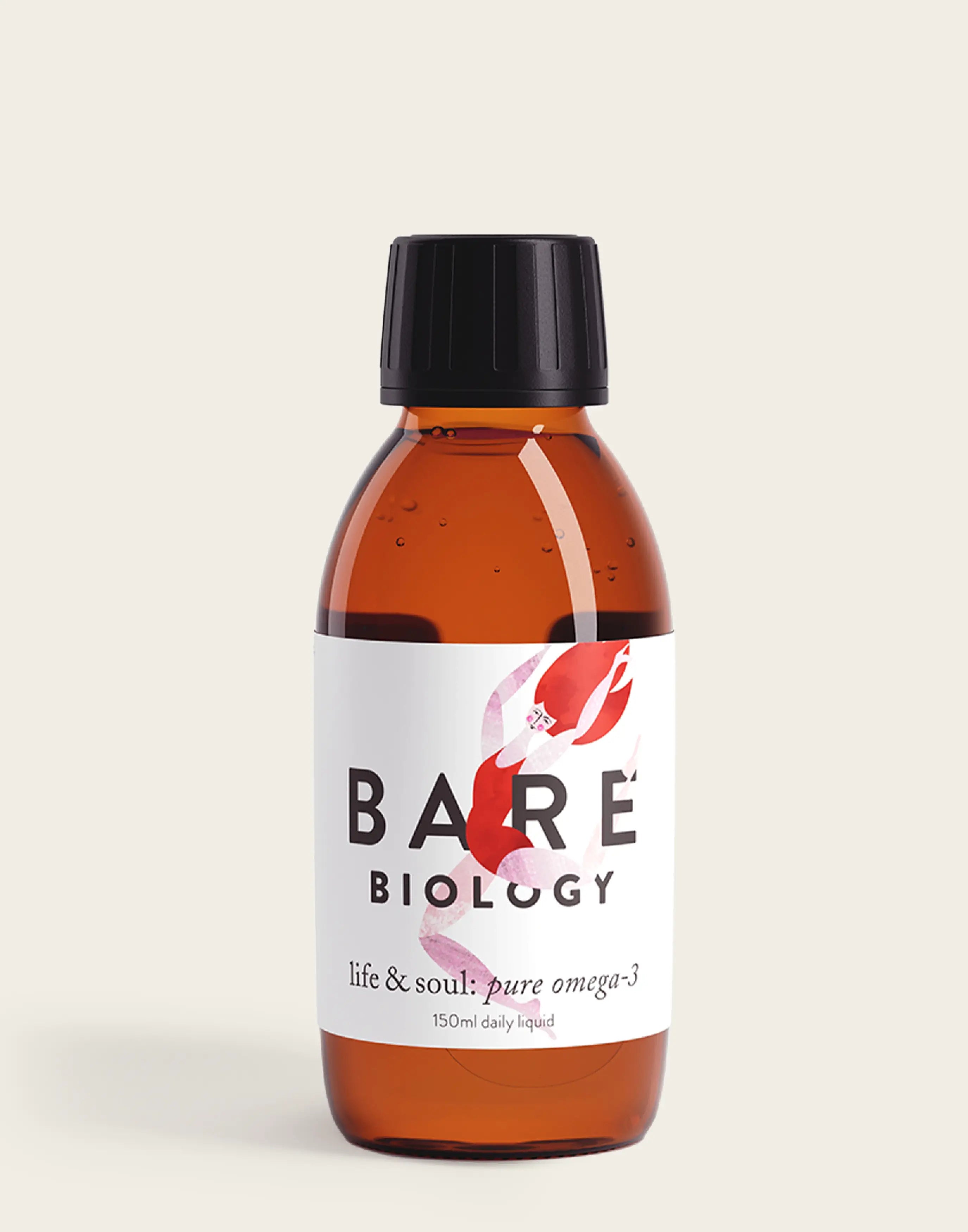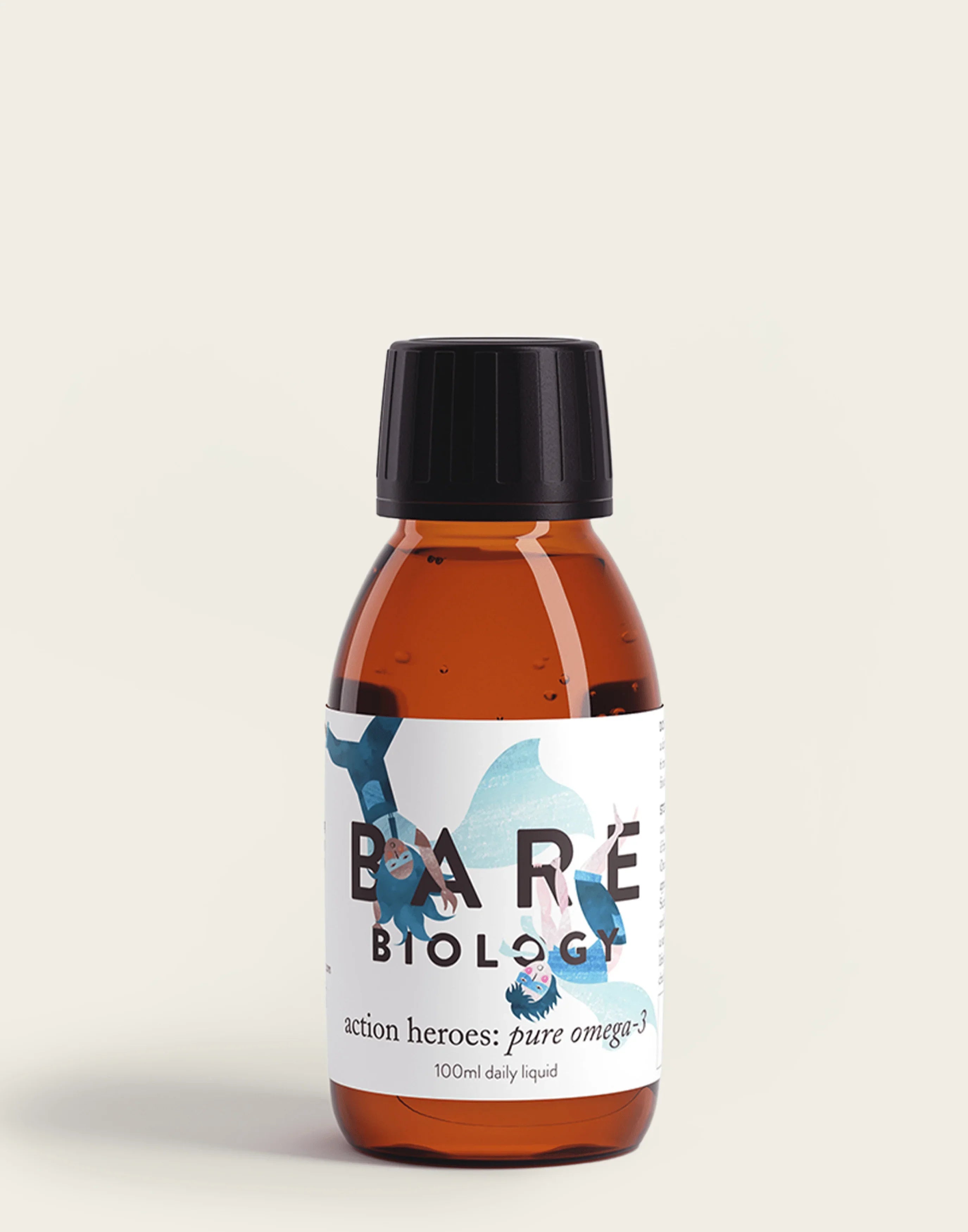The benefits of omega-3 fish oil
So what exactly is omega-3, and why do we need it?
It nourishes, soothes and supports. It bathes all the trillions of cells in our brains and bodies to keep us healthy. Yes, omega-3 is a real gift from nature, but it’s a gift we must give to ourselves through our diets.
CONTENTS
The benefits of omega-3 fish oil
What type of Omega do we need?
Five great reasons to take omega-3
What is omega-3 and where is it found?
The importance of the omega-3 to omega-6 ratio
How can you make sure you’re getting enough omega-3?
What does omega-3 fish oil do to the body?
What’s the difference between omega-3 EPA and DHA?
What’s the best ratio of EPA and DHA?
At what stage of life do you need more DHA?
What’s the best DHA omega-3 supplement you can take?
Understanding Omega-3: Vital but Elusive Essential Fatty Acids
Omega-3 is an essential polyunsaturated long chain fatty acid found almost exclusively in fish and seafood. It’s called essential because we need it but our bodies can’t make it on their own. We can turn sunlight into Vitamin D, for example, but the only way to get the omega-3 we need is to eat it. And most of us simply aren’t eating enough.
In a perfect world your diet would provide you all the omega-3 fatty acids you need to be healthy. Realistically though, when was the last time you sat down to a nice plate of sardines? And how often do your kids eat oily fish? There’s also the little problem of the amount of omega-6 in our diets. There’s been a drastic change in the food we eat over the last 100 years, a relatively short period in our 200,000 year history. Food processing and industrialised practices in agriculture have flooded the food supply with omega-6, while another nutrient has quietly slipped away, Omega-3.
What types of Omega do we need?
All our cells need both omega-6 and omega-3, but in balanced amounts. Too many rigid omega-6s and too few fluid omega-3s do not add up to good health.
The UK Food Standards Agency says we should be eating at least two portions of fish per week, one of which should be oily, such as salmon, mackerel and sardines. This would work out to around 200mg of EPA and DHA combined per day.
But remember, that’s the minimum recommended amount of omega-3 to maintain general good health. If you were hoping that omega-3 would benefit your health, you’d need to eat far more than this. Take blood pressure, for example. The approved health claim for omega-3 suggested by the European Food Safety Authority (EFSA) for normal blood pressure is 3,000mg of EPA and DHA per day, ten times the amount!
And even if you somehow managed to eat wild salmon twice a day, there’s also the worry about the amount of environmental toxins this could expose you to, such as mercury and heavy metals.
That’s where supplementing with high strength fish oil capsules or liquid comes in. It suddenly makes all the benefits of omega-3 accessible to all, even those of us who don’t like fish.
Need more convincing?
Our guide to the benefits of omega-3 will show you why fish oil deserves its rightful place among your supplements.
Foods that contain omega-3
The omega-3 fatty acids EPA and DHA are found almost exclusively in fish and seafood. The best sources of omega-3 EPA and DHA are oily fish such as sardines and mackerel. A good quality omega-3 fish oil supplement will contain high levels of both EPA and DHA.
ALA is the other main type of omega-3. Sources of omega-3 ALA include vegetable oils, flaxseed and nuts, but your body must then work to convert ALA to EPA and DHA to make use of it.
Fish take ALA from their food and turn it into EPA and DHA in their bodies. They’re really good at this. But we humans can only convert it in small amounts. In fact, despite it being the most common omega-3 fat in our diets, only about 5% of the ALA we eat gets converted into EPA, while as little as 0.5% gets converted into DHA. And the rest of it? You’ll either use it for energy or it will be stored as fat.
For this reason the ALA you get from nuts and seeds should never be relied upon as your sole source of omega-3. If you can eat fish this is by far the best way to get your omega-3. Read more about omega-3 rich foods.
What is omega-3 good for?
There are many, many benefits of omega-3. We know it’s good for our brains, our eyes and our blood pressure and it helps keep our skin healthy. A growing foetus and baby needs a good supply of omega-3 to form brains and eyes, which can only come from mum and you can read more about this in our omega-3 guide to pregnancy.
When you read the newspapers, though, things start to get confusing. Omega-3 is never out of the headlines, but many of the nutritional studies reported on seem to contradict each other. Wouldn’t it be good if there was an official line on the benefits of omega-3 you could trust? Luckily for us there is. And it comes from the European Food Standards Agency.
An independent advisory body, the EFSA works with our own UK Food Safety Agency along with the European Commission, the European Parliament and all other EU member states to provide scientific advice on anything to do with the food chain. When it comes to saying that a certain nutrient will benefit a particular health condition, they’re always cautious about what claims they’ll approve.
So what do the EFSA say specifically about omega-3 benefits? They currently approve the health claims for the following conditions...
Five great reasons to take omega-3
There are many different types of fatty acids that belong to the omega-3 family, but EPA (eicosapentaenoic acid), DHA (docosahexaenoic acid) and ALA (alpha-linolenic acid) are the three types you hear about most often, because they’re the most useful to our bodies.
Blood Pressure
Heart Health
Brain Health
Eye Health
Pregnancy Support
What is omega-3 and where is it found?
The omega-3 fatty acids EPA and DHA are found almost exclusively in fish and seafood. The best sources of omega-3 EPA and DHA are oily fish such as sardines and mackerel. A good quality omega-3 fish oil supplement will be concentrated, so that it contains high levels of both EPA and DHA.
ALA is the other main type of omega-3. Sources of omega-3 ALA include vegetable oils, flaxseed and nuts. But before you dive into the nut bowl, there’s some bad news. Your body must then go through some extra steps to convert the ALA into EPA and DHA so it can make use of it.
Fish take ALA from their food (such as algae or smaller prey fish) and store it as EPA and DHA in their bodies. They’re really good at converting ALA. But we humans can only convert it in small amounts. In fact, despite it being the most common omega-3 fat in our diets, only about 5% of the ALA we eat gets converted into EPA, while as little as 0.5% gets converted into DHA. And the rest of it? You’ll either burn it for energy or it will be stored as fat.
For this reason, the fatty acids you get from nuts and seeds should never be relied upon as your sole source of omega-3. If you can eat fish this is by far the best way to get your omega-3. Read more about omega-3 rich foods.
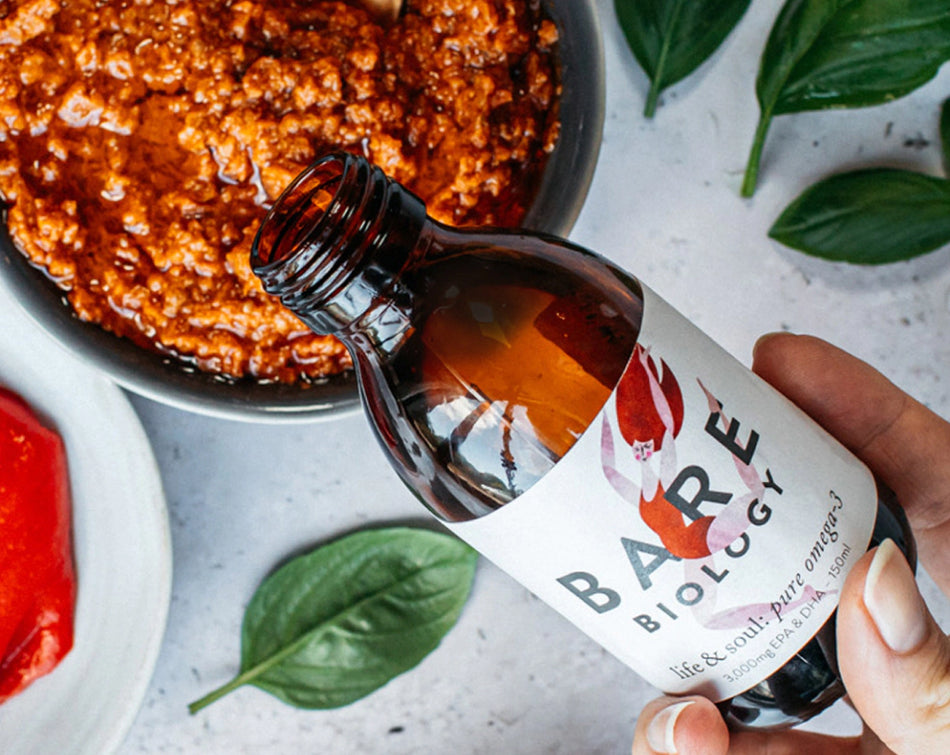


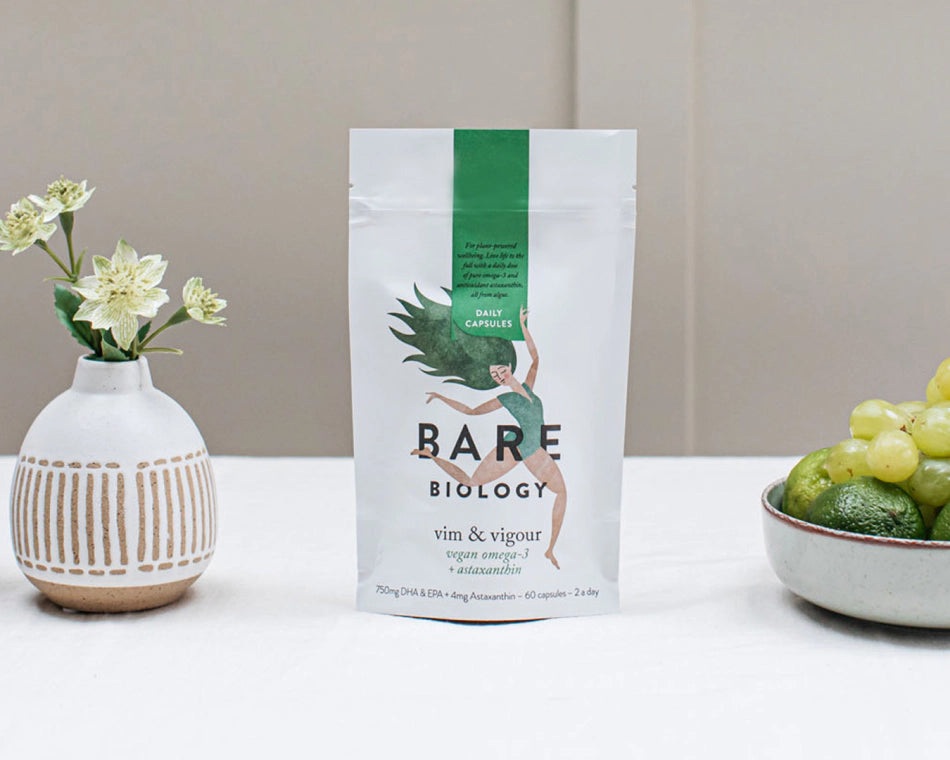
Omega-3 vs omega-6
The omega-6 group of fatty acids are vitally important to us and are also used for brain growth and development. The problem is we eat far too many of them. It’s hard not to. They’re in virtually everything we eat, from that healthy-looking granola to the oils we cook with. Even the animals we use for meat are fed on omega-6 rich grain instead of their normal diet of grass.
The importance of the omega-3 to omega-6 ratio
As little as 150 years ago the ratio of omega-3 to 6 in our diets was 1:1. Now it’s closer to 1:15 and as high as 1:25 in the US. That imbalance really isn’t good for us because once you’ve eaten all the omega-6 you need, the excess can have inflammatory properties. Read more about this delicate balancing act in our omega-3, 6, 9 guide.
To get 700mg of omega-3 per day, an amount that’s somewhere in the middle of the average suggested range for good health, you’d have to eat one serving of salmon every day.
How much omega-3 do you need?
There isn’t a set standard for how much omega-3 we need, with advice on recommended daily amounts often changing. Suggestions range from 200mg to 3,000mg, but this really depends on who you ask.
It may also depend on how much omega-6 you’re getting in your diet. If you know you’re eating too many processed foods and vegetable oils, you may need closer to the upper end of the recommended amounts of omega-3 to provide you with the correct balance.
How can you make sure you’re getting enough omega-3?
Ideally you’d get all the omega-3 you need by eating a diet rich in oily fish, but that’s just not possible with concerns over environmental toxins.
To get 700mg of omega-3 per day, an amount that’s somewhere in the middle of the average suggested range for good health, you’d have to eat one serving of salmon every day. And that’s if you choose wild salmon, because farmed fish contains only about half the omega-3 levels (as well as worrying levels of antibiotics).
But the NHS currently recommend that women of childbearing age only eat two portions of oily fish per week because of the level of pollutants that can build up in the bodies of oily fish. And this is where an omega-3 fish oil supplement such as Life & Soul comes in.
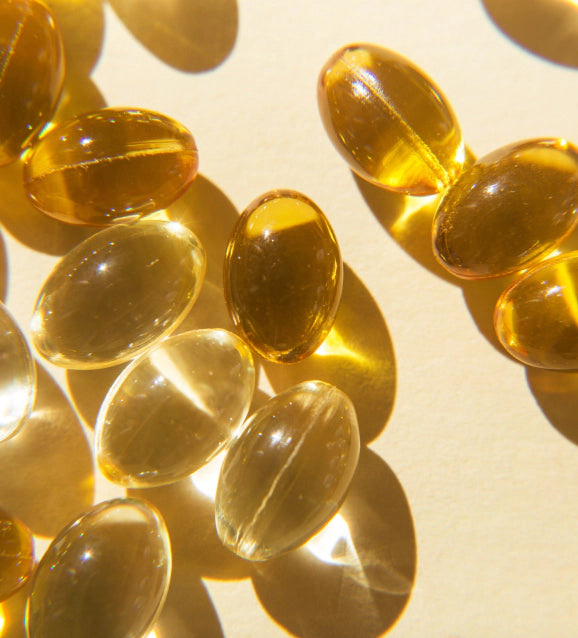
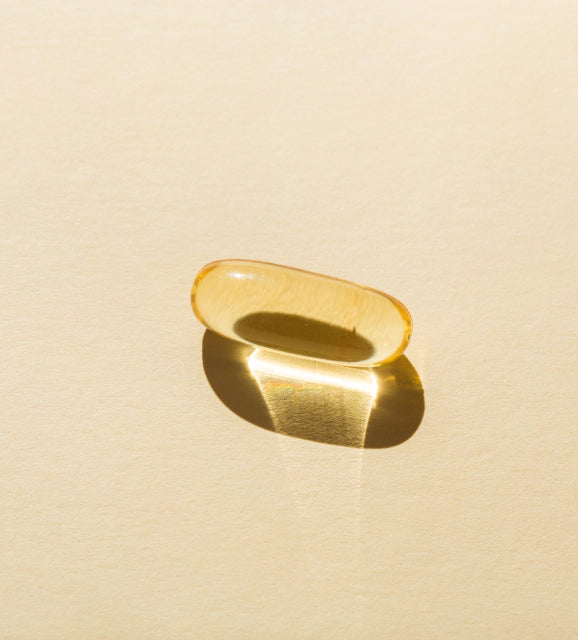
What is omega-3 fish oil?
Whether they’re worried about pollution or simply don’t like the taste, many people find it hard to get enough omega-3 in their diet from eating fish alone.
Fish oil that comes from the tissues of oily fish is a highly concentrated source of omega-3 EPA and DHA. The best sources of fish oil are cold-water, fatty fish. Smaller varieties of fish are ideal, such as sardines and mackerel, because they don’t live as long as larger fish, so are exposed to fewer toxins.
One of the most important benefits an omega-3 fish oil has over eating fish every day, is that it’s easy to take and suitable even for those who don’t like the taste of fish. Plus choosing a good quality supplement means you won’t have to worry about how many toxins you may be consuming.
What does omega-3 fish oil do to the body?
Once you’ve taken a teaspoon of fish oil, the omega-3 fatty acids go through a series of chemical reactions as your body converts them into compounds it can use. While they both use the same metabolic pathways, EPA and DHA work in different ways.
EPA is used to lessen the effects of a family of compounds known collectively as eicosanoids. The more EPA you have in your diet the fewer eicosanoids you produce in the first place.
DHA is a structural fat used to build cell membranes themselves, in particular the nerve cells in the brain and eyes.
What’s the difference between omega-3 EPA and DHA?
They may do different jobs, but EPA and DHA work well together. No wonder they’re often found side-by-side in nature, in the bodies of small oily fish for example.
It’s only quite recently we’ve been able to understand the role EPA and DHA play individually in the body. Scientists now have the technology to separate the two, enabling them to investigate how each one works and their discoveries have been fascinating.
Among their findings is the fact that EPA and DHA don't compete with one another for absorption. DHA is a by-product of EPA and uses different enzymes in the metabolic pathway.
EPA is known to be more fluid, while DHA is known to give cells more structure. And to understand what good team players they are you only have to take a look at their twin roles in the brain.
When it comes to your grey matter, DHA takes a leading role. While DHA is found in all the tissues of the body, it’s particularly concentrated in the brain where it accounts for up to 97% of the total omega-3 fats.
Because it forms such a major part of the structure of brain cells, DHA is vital in pregnancy. It’s needed for healthy foetal development, as it ensures cells in the brain, eyes and other parts of the nervous system develop and function properly. This is why pregnant women and those who are breastfeeding need more DHA in their diet.
But recently scientists have discovered that EPA also plays a role in the brain, with its more fluid structure being crucial for chemical signalling between brain cells.
EPA and DHA also play different roles in another major organ, your skin. Again, DHA helps build cells, this time the skin cells forming deep in the phospholipid bilayer, while EPA keeps the cells moist and supple.
So EPA and DHA work synergistically, as summed up by Jackie McCusker, nutritional therapist at the University of Westminster’s Be Well London clinic. She says, “EPA and DHA work together to help every cell function.”
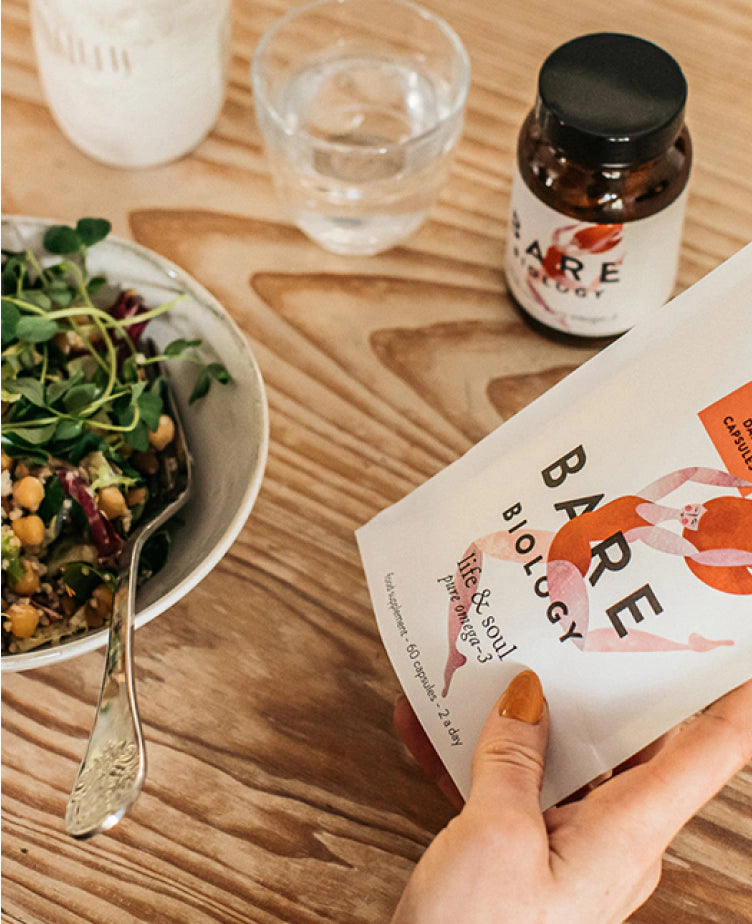
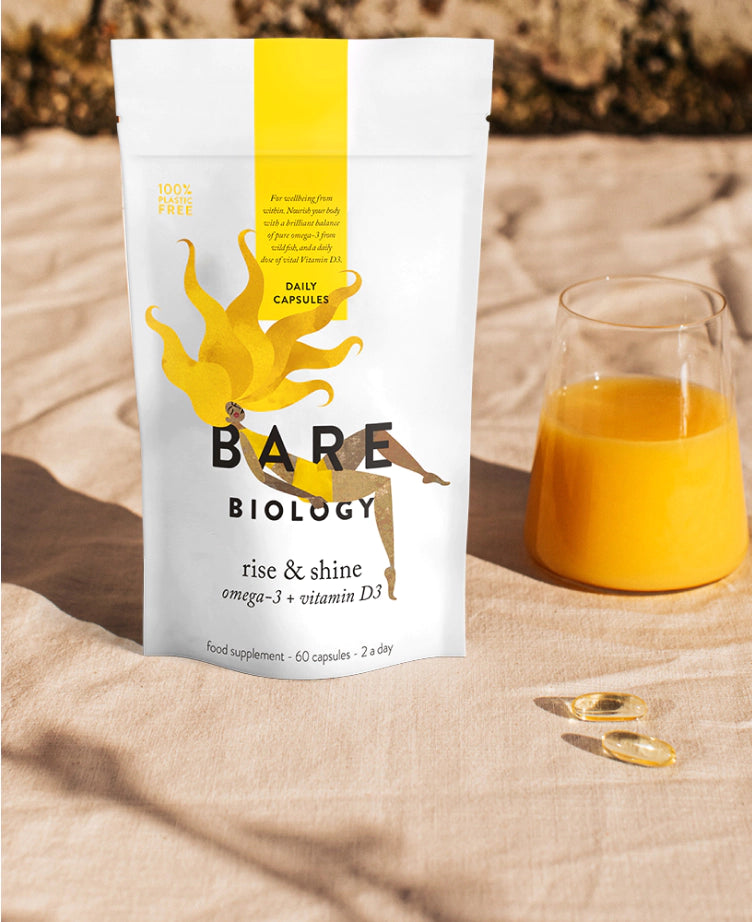
What’s the best ratio of EPA and DHA?
While both have important roles to play in the body, whether you require more EPA or DHA depends very much on your life stage and your reasons for taking omega-3 in the first place.
“The requirement for each individual is different, dependent on their stage of life,” says nutritionist Jackie. “For example, if women are pregnant their requirement for DHA will be more significant because DHA is needed for the development of the growing baby.”
But as you age, you may wish to keep your joints healthy, your blood pressure down or your muscles strong. At this point your need for a supplement that contains high amounts of both EPA and DHA increases.
At what stage of life do you need more DHA?
When you’re pregnant or breastfeeding your need for DHA increases. That’s because your body prioritises your own DHA to support the brain and eye development of your growing baby. The EFSA approves the health claim that mums and mums-to-be take 200mg of DHA per day - that’s on top of the daily recommended amount of 250mg of combined EPA and DHA needed for general good health.
But DHA plays an important role in our brains throughout our lives. We know this because the role of DHA omega-3 in the brain is very well-studied and you can even see it in the animal kingdom. Dolphins have much bigger brains than zebras although they’re similar in body sizes, because their diets are rich in DHA.
But it’s good for we humans too. After all, we’re all sold on the idea that food can shape the way our bodies look and feel. But what many of us forget is that the quality of the food we eat is also shaping our brain, from its structure to the way it functions, which in turn shapes our thoughts, feelings and emotions.
The omega-3 DHA found mainly in oily fish is great brain food. It has been shown to keep cells fluid and enables neurons to communicate with each other, something that’s essential for them to work effectively. No wonder the European Food Safety Authority (EFSA) has approved the health claim that omega-3 maintains normal brain function.
What’s the best DHA omega-3 supplement you can take?
Taking a supplement such as Bare Biology’s Mindful gives you a cost effective dose of 560mg DHA omega-3, but without the chemicals, nasties or fishy taste. If you’re pregnant or breastfeeding, one small capsule of Mums & Bumps gives 560mg DHA and 40mg EPA.
Every batch is certified and awarded a 5-star purity and quality rating from International Fish Oil Standards (IFOS), the highest accolade you can receive and a guarantee of purity, freshness and strength.
At what stage of life would you require more EPA?
With its fluid, soothing nature, EPA is great at any time when your diet isn’t quite as good as it should be. Processed foods contain large amounts of vegetable oils, meaning we’re consuming Omega 6 fats on a scale unprecedented in human history. Omega-6 fat is more rigid than the fluid omega-3 EPA and while we do need some of it for good health, it should be balanced by similar intakes of omega-3.
When we eat more omega-6 fatty acids than the body can handle, without balancing them out with adequate amounts of omega-3, they are broken down quickly and converted into prostaglandins and other inflammatory proteins.
EPA is also important during the menopause, as it can help with hormone transport and communication. Without a healthy diet rich in healthy fats like EPA, the body won’t be able to produce the hormones it needs. Not great news when your hormones are fluctuating anyway.
What’s the best EPA omega-3 supplement you can take?
The best EPA omega-3 fish oil supplement is one that contains a high dose of active ingredients, similar to a dose of Life & Soul liquid.
One tiny teaspoon of high strength Life & Soul from Bare Biology has 2,000mg EPA and 1,000mg DHA and is the only product on the market that gives you this in a single spoonful, meaning you don’t have to take handfuls of lower quality capsules per day.
Read more tips on choosing a fish oil supplement
We tick all these boxes, and more, so you can relax
Quality, purity and efficacy in everything we make for you
Additive Free
Complete Transparency
Made in Norway & UK
UK Family Owned
3rd Party Tested
Free from Nasties

